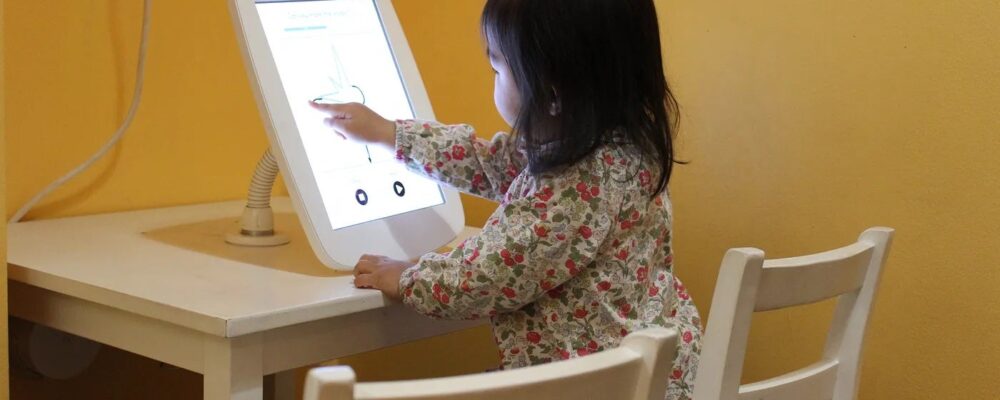How California is taking on inequity for Black patients during pregnancy, childbirth
Author Erin DigitalePublished on January 31, 2024January 31, 2024
Across the United States, Black women are three to four times as likely as their white peers to experience life-threatening pregnancy complications or die giving birth. Given that the U.S. maternal mortality rate of 32 deaths per 100,000 live births is 10 times higher than that in countries with the lowest rates of maternal death, the inequity is setting off public health alarms.
The disparity is partly linked to preexisting factors such as lower socioeconomic status and poorer health before pregnancy. But even after accounting for these factors, Black women still experience twice as many severe pregnancy complications and deaths — leading experts in the field to examine how systemic racism contributes to the unequal outcomes.
The gap persists even in California, where maternal death rates are the lowest in the country, about half the national average. California’s leadership in providing better, safer medical care for pregnancy and birth is due in large part to evidence-based practices developed at the California Maternal Quality Care Collaborative, which is housed at Stanford Medicine.
“We’re proud that the rate of preventable maternal deaths is lower than elsewhere in the U.S., but it’s still unacceptably high — and way too many of these women look like me,” said Amanda Williams, MD, the group’s clinical innovation advisor and an adjunct clinical associate professor of obstetrics and gynecology at Stanford Medicine.
Before starting her role, in 2022, Williams — who is Black — led outpatient maternity care at Kaiser Permanente Northern California, where approximately 45,000 California babies are born each year. As a survivor of a serious pregnancy complication, she is passionate about the cause on a personal as well as professional level.

Williams spoke about how the collaborative is using a quality-improvement approach to develop targeted, measurable ways to reduce complications and deaths, including the use of evidence-based quality improvement techniques to target obstetric complications that disproportionately affect Black pregnant people and root out systemic racism from maternity care.
Tell me about the state of giving birth in California right now. When it comes to keeping moms safe during pregnancy and birth, how are we doing?
Williams: California has the lowest pregnancy-related mortality ratio of any state in the United States. For the last 15 years, we’ve been significantly below the U.S. maternal mortality rate.
CMQCC’s work has made that difference. We have a maternal data center, where hospital discharge diagnoses meet up with maternal vital statistics. We package the data, analyze it, give it back to the hospitals and help them with quality improvement initiatives.
We also run collaboratives through which hospitals learn how to handle obstetric complications such as hemorrhage, hypertension and sepsis. That is the beginning of equity work, because when you start having standardized responses to medical problems, outcomes for patients that have been left behind can improve.
We’ve addressed the lower-hanging fruit. What remains now is digging into where systemic racism has been enmeshed in the practice of medicine, which is much harder to detangle.
What remains now is digging into where systemic racism has been enmeshed in the practice of medicine, which is much harder to detangle.
Amanda Williams
What inequities exist for people giving birth in California?
Williams: When we’re comparing Black birthing people to their white, Hispanic or Asian peers, their maternal mortality ratio is about three to four times, or 300% to 400%, worse. The number is similar for Indigenous people. Even though these are big numbers, maternal deaths are still rare. I’ve been an obstetrician for 20 years, but I can count on one hand the number of maternal deaths I’ve been tangentially associated with. Across California, we see about 70 maternal deaths per year, around 60% of which — 42 or so per year – are probably preventable. These deaths occur for many reasons.
But when we look at the rates of common obstetric events, such as cesarean sections, which we see every single day, there are also disparities among different races and ethnicities. When you look at severe maternal morbidity — life-threatening events that we might see every week to every month — again, you see significantly higher numbers for American Indian/Alaska natives and Black birthing people, and in some cases Asian and Pacific Islanders, compared with their white or Hispanic peers.
What do we know about why those disparities exist?
We have addressed a lot of the contributors to uneven outcomes among different racial and ethnic groups in California. We have really strengthened evidence-based care, using the same best practices for all patients, for maternal hemorrhage and hypertensive disorders of pregnancy, for example. That has reduced inequities.
After we correct for income, we still have double the rate of maternal death in California for Black patients.
Amanda Williams
But disparities still exist, even after you adjust for medical conditions going into pregnancy, such as obesity, chronic hypertension and diabetes. And they exist across education level and socioeconomic status. After we correct for income, we still have double the rate of maternal death in California for Black patients.
In statistical analyses, we’ve corrected for the medical conditions, income, education — all of these things that are reasonable contributors to the problem. What remains is systemic racism.
In California, we have the privilege of legislation that mandates implicit bias training, and it has been widely implemented across the state. That baseline work has been done, so you’re not going to see a lot of outright bigotry in patient care. What we’re digging into now is where implicit bias still occurs.
For example, where in those nuanced moments of deciding to do a C-section does bias sneak in, perpetuating worse outcomes for Black and Indigenous patients? That’s one research question we are now addressing.
What equity initiatives does the CMQCC have underway?
There are specific clinical projects where equity work has been woven in. This includes research on reducing iron-deficiency anemia during pregnancy, integrating midwives and doulas into maternity care, preventing preeclampsia by giving low-dose aspirin during pregnancy, work on maternal sepsis, and a campaign to redesign postpartum care. Many of these projects focus on outcomes that disproportionately impact Black people during pregnancy and childbirth. We’re including advisory boards of people from Black and brown communities, giving them decision-making capacity and integrating their experience into our work. This is in addition to work we are leading with hospitals and clinics in the communities. We’re really elevating diverse patient voices.
We also have a project funded by the Centers for Disease Control and Prevention focused primarily on birth equity. It’s an evidence-based collaborative bringing hospitals together across the state to address systemic racism in obstetrics. The outcome we chose is disparities in C-section rates, which are higher among Black patients. C-sections can be lifesaving, but performing them unnecessarily worsens recovery from childbirth, adds potential complications such as hemorrhage and post-surgical infections, and makes patients’ future pregnancies riskier.
How do you take something as complicated as maternal health inequity and use quality-improvement methods to drive a more equitable birth experience?
Amanda Williams
We are asking: How do you take something as complicated as maternal health inequity and use quality-improvement methods to drive a more equitable birth experience? We are thinking about what it means to operationalize equity. We want to figure out how to instill accountability, teach hospitals active listening, use the data to create quality improvement projects, address microaggressions and change the culture in hospitals — how caregivers in labor and delivery units listen to patients, for example — so that patients are treated equitably.
It’s important that this project focus on an outcome that is measurable and common so we can test whether our efforts can make a difference in 18 months. It makes sense to study C-sections, which happen many times per day, totaling around 130,000 times per year in California.
What are your big-picture goals for this work?
I want rates of severe maternal morbidity and C-sections among patients of different demographics to be as similar, and as low, as possible. I think that is achievable within my career. Erasing differences in maternal mortality will probably be work that extends beyond my lifetime, but I want to make a dent.
It’s also important to spread our work beyond California. The Hospital Action Guide for Respectful, Equity-Centered Care, which is the curriculum for our equity initiative, is an interactive, action-based tool that is now available to anybody in hospitals in California. By the end of the year, we plan to open it up to the whole country.
You mentioned that a lot of patients who experience birth complications look like you. How does that inform your work?
I am a preeclampsia survivor. I could not have been at greater academic privilege, being the chief resident in obstetrics and gynecology at the University of California, San Francisco, and I was still a severe maternal morbidity patient. When my son was born in 2004, I had an iatrogenic preterm birth: I was induced five weeks early so I could start getting better from my preeclampsia, and my baby went to the neonatal intensive care unit. Not surprisingly, I had pretty significant postpartum depression following his birth.
Being privileged wasn’t enough. Excellent clinical care was no match for the impact of systemic racism.
Further, in 2004, research had not yet been undertaken demonstrating the reduction in preeclampsia for patients like me who, due to my exposure to systemic racism and my first pregnancy status, would today have been prescribed low-dose aspirin. Spreading that knowledge in a patient-centered fashion is what we hope we’ll accomplish with our campaign to promote low-dose aspirin for preeclampsia prevention. We’re building an evidence base that really shows us the best ways to take care of specific pregnant populations.
Image: Samuel Borges Photography
“Stanford University, officially Leland Stanford Junior University, is a private research university in Stanford, California. The campus occupies 8,180 acres, among the largest in the United States, and enrols over 17,000 students.”
Please visit the firm link to site






